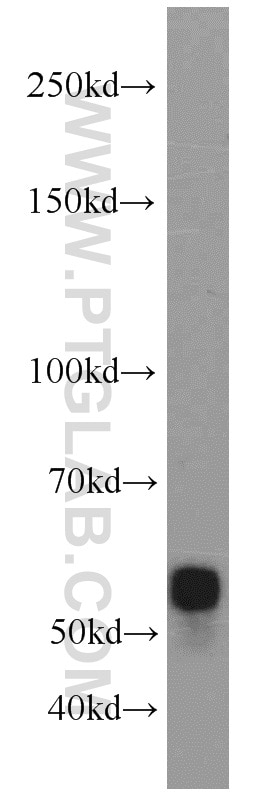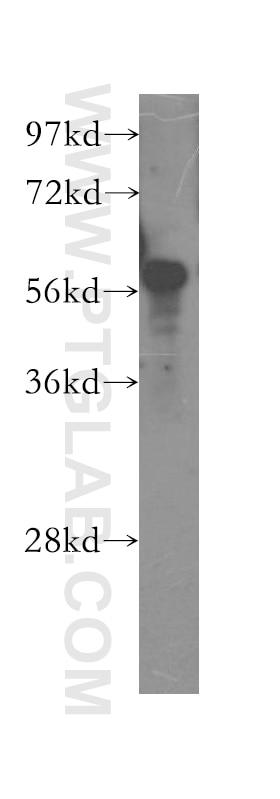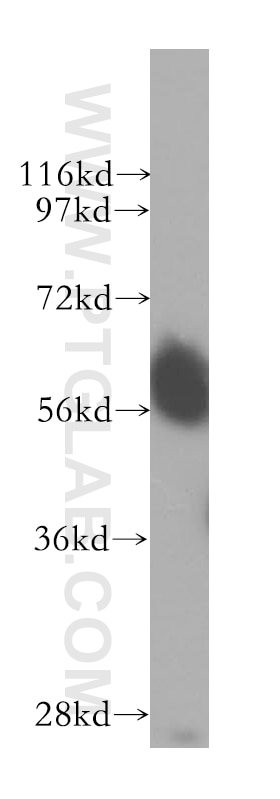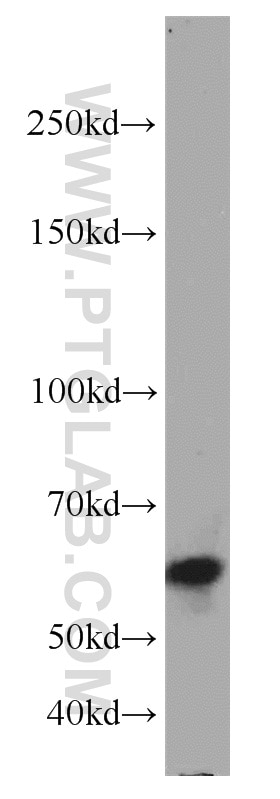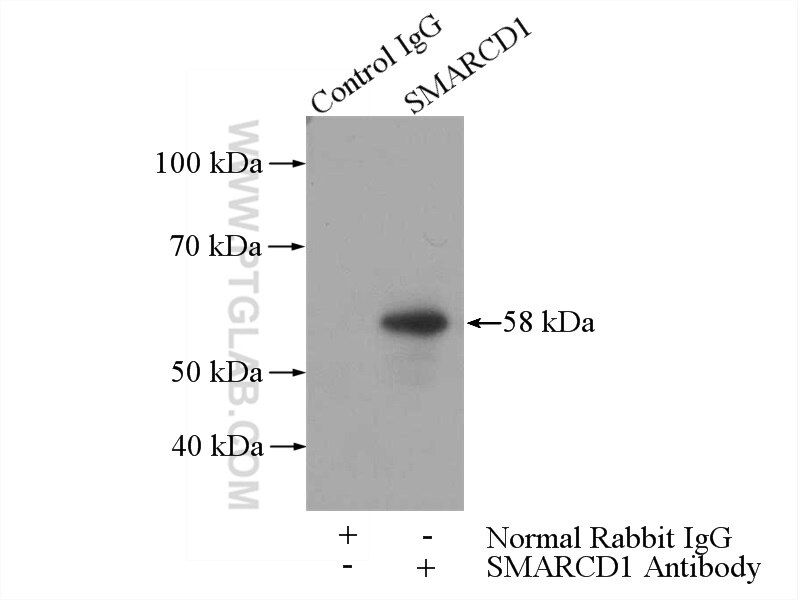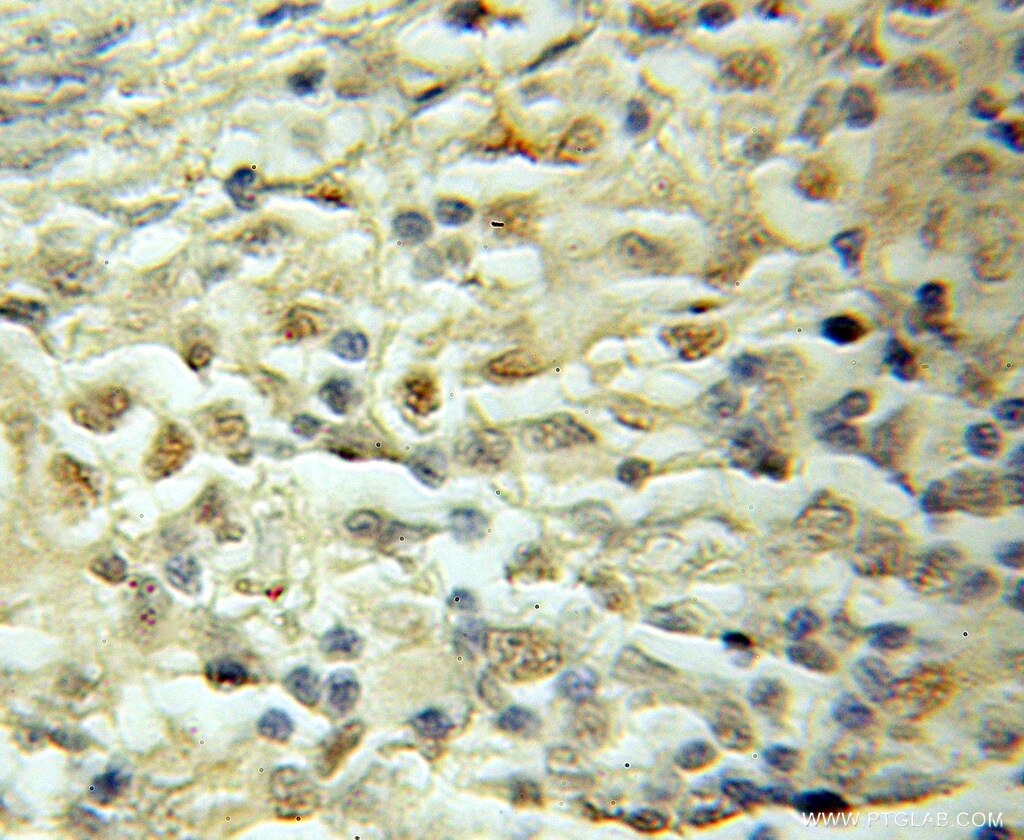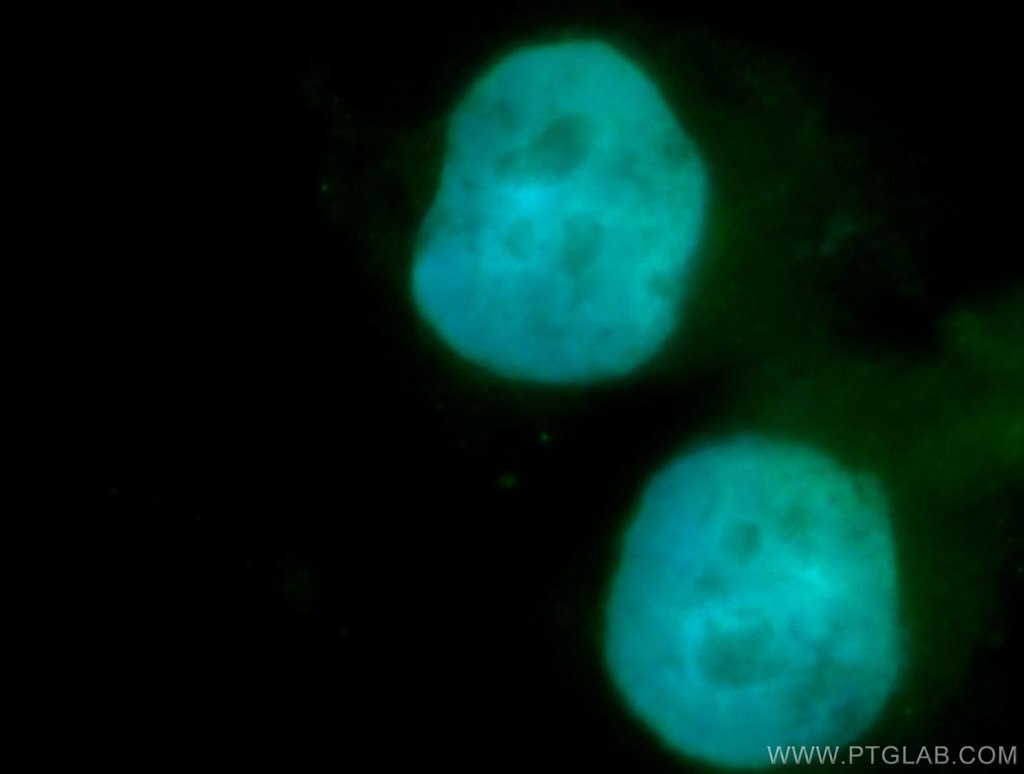- Featured Product
- KD/KO Validated
SMARCD1 Polyklonaler Antikörper
SMARCD1 Polyklonal Antikörper für WB, IHC, IF/ICC, IP, ELISA
Wirt / Isotyp
Kaninchen / IgG
Getestete Reaktivität
human, Maus, Ratte
Anwendung
WB, IHC, IF/ICC, IP, CoIP, ELISA
Konjugation
Unkonjugiert
Kat-Nr. : 10998-2-AP
Synonyme
Geprüfte Anwendungen
| Erfolgreiche Detektion in WB | Maushirngewebe, humanes Hirngewebe, Jurkat-Zellen |
| Erfolgreiche IP | Maushirngewebe |
| Erfolgreiche Detektion in IHC | humanes Lymphomgewebe Hinweis: Antigendemaskierung mit TE-Puffer pH 9,0 empfohlen. (*) Wahlweise kann die Antigendemaskierung auch mit Citratpuffer pH 6,0 erfolgen. |
| Erfolgreiche Detektion in IF/ICC | SH-SY5Y-Zellen |
Empfohlene Verdünnung
| Anwendung | Verdünnung |
|---|---|
| Western Blot (WB) | WB : 1:500-1:1000 |
| Immunpräzipitation (IP) | IP : 0.5-4.0 ug for 1.0-3.0 mg of total protein lysate |
| Immunhistochemie (IHC) | IHC : 1:20-1:200 |
| Immunfluoreszenz (IF)/ICC | IF/ICC : 1:20-1:200 |
| It is recommended that this reagent should be titrated in each testing system to obtain optimal results. | |
| Sample-dependent, check data in validation data gallery | |
Veröffentlichte Anwendungen
| KD/KO | See 2 publications below |
| WB | See 7 publications below |
| IHC | See 1 publications below |
| CoIP | See 1 publications below |
Produktinformation
10998-2-AP bindet in WB, IHC, IF/ICC, IP, CoIP, ELISA SMARCD1 und zeigt Reaktivität mit human, Maus, Ratten
| Getestete Reaktivität | human, Maus, Ratte |
| In Publikationen genannte Reaktivität | human, Maus |
| Wirt / Isotyp | Kaninchen / IgG |
| Klonalität | Polyklonal |
| Typ | Antikörper |
| Immunogen | SMARCD1 fusion protein Ag1453 |
| Vollständiger Name | SWI/SNF related, matrix associated, actin dependent regulator of chromatin, subfamily d, member 1 |
| Berechnetes Molekulargewicht | 58 kDa |
| Beobachtetes Molekulargewicht | 58 kDa |
| GenBank-Zugangsnummer | BC009368 |
| Gene symbol | SMARCD1 |
| Gene ID (NCBI) | 6602 |
| Konjugation | Unkonjugiert |
| Form | Liquid |
| Reinigungsmethode | Antigen-Affinitätsreinigung |
| Lagerungspuffer | PBS with 0.02% sodium azide and 50% glycerol |
| Lagerungsbedingungen | Bei -20°C lagern. Nach dem Versand ein Jahr lang stabil Aliquotieren ist bei -20oC Lagerung nicht notwendig. 20ul Größen enthalten 0,1% BSA. |
Hintergrundinformationen
SMARCD1 belongs to the nuclear SWI/SNF chromatin remodeling complex, which regulates transcription and interacts with nucleolin in the nucleus. In addition, it's a member of the neural progenitors-specific chromatin remodeling complex (npBAF complex) and the neuron-specific chromatin remodeling complex (nBAF complex). It possesses a SWIB domain which is homologous to and shares a common fold with the p53-binding domain of MDM2, a cell cycle regulator which interacts with NPM1. SMARCD1 has a strong influence on the Vitamin D-mediated transcriptional activity from an enhancer Vitamin D receptor element (VDRE). And it can mediates critical interactions between nuclear receptors and the BRG1/SMARCA4 chromatin-remodeling complex for transactivation. This antibody may have across reaction with SMARCD2.
Protokolle
| PRODUKTSPEZIFISCHE PROTOKOLLE | |
|---|---|
| WB protocol for SMARCD1 antibody 10998-2-AP | Protokoll herunterladen |
| IHC protocol for SMARCD1 antibody 10998-2-AP | Protokoll herunterladenl |
| IF protocol for SMARCD1 antibody 10998-2-AP | Protokoll herunterladen |
| IP protocol for SMARCD1 antibody 10998-2-AP | Protokoll herunterladen |
| STANDARD-PROTOKOLLE | |
|---|---|
| Klicken Sie hier, um unsere Standardprotokolle anzuzeigen |
Publikationen
| Species | Application | Title |
|---|---|---|
Nat Commun BAF60a deficiency uncouples chromatin accessibility and cold sensitivity from white fat browning.
| ||
Nucleic Acids Res HRP2-DPF3a-BAF complex coordinates histone modification and chromatin remodeling to regulate myogenic gene transcription. | ||
Cancer Lett MicroRNA-490-3P targets CDK1 and inhibits ovarian epithelial carcinoma tumorigenesis and progression. | ||
J Biol Chem Phosphorylation of Williams syndrome transcription factor by MAPK induces a switching between two distinct chromatin remodeling complexes. | ||
J Cell Mol Med DLEU1 contributes to ovarian carcinoma tumourigenesis and development by interacting with miR-490-3p and altering CDK1 expression. | ||
NPJ Aging Mech Dis SMARCD1 regulates senescence-associated lipid accumulation in hepatocytes.
|
Rezensionen
The reviews below have been submitted by verified Proteintech customers who received an incentive for providing their feedback.
FH Marian (Verified Customer) (11-13-2019) | We used SMARCD1 Antibody to perform microwestern arrays. We obtained very precise and biologically relevant results. The blots were clean and smear-free.
|
